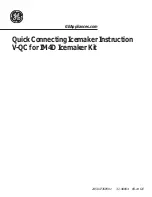
IT
GB / IE
11
GB / IE
free the centre hole of any residue of coffee grounds that could clog it (Fig. 12).
Cleaning the filter holder seat
With time, coffee residue may accumulate on the filter holder seat. It can be removed with a
toothpick, a sponge (Fig. 13), or by letting water run through without fitting the filter holder
(Fig. 4).
Cleaning the cappuccino maker
Warning!
Perform this operation when the chrome-plated pipe is cold so as to prevent
burns.
Unscrew the cappuccino maker (G) from the steam tube (G1) (Fig. 14) and wash it with
running water. The steam tube (G1) can be cleaned with a non-abrasive cloth. If necessary,
clean the small steam outlet hole again with a pin (Fig. 14). Screw the cappuccino maker
back on as far as it will go. After use, always let the steam nozzle run for a few seconds so
to free the outlet from any possible residue.
Cleaning the tank
Periodically clean the inside of the tank with a sponge or damp cloth.
Cleaning the grill and the drip tray
Remember to empty the drip tray from time to time (H).
Remove the grill (I) and wash it under running water; remove the drip tray (H) from the
machine, empty it and wash it under running water.
Cleaning the machine body
Warning!
Clean the fixed parts of the machine using only a damp, non-abrasive cloth
so as to not damage the body.
DECALCIFICATION
Good maintenance and regular cleaning preserve and keep the machine efficient for a longer
amount of time, considerably limiting the risks of lime deposits forming inside the appliance.
However, should your coffee machine fail to work properly as a result of the frequent use of
hard, high calcium content water, you may perform a decalcification procedure to restore
its operational efficiency. Should you need to decalcify your appliance, please follow the
instructions which come with the decalcifying product.
PUTTING OUT OF SERVICE
If you want to put the machine out of service, you must disconnect it electrically, empty the
water tank and drip tray and clean it (see the paragraph on “Cleaning the appliance”).
In the case of scrapping, you must separate the various materials used in making the machine
and dispose of them based on their composition and on the legal provisions in force in the
country of use.












































